119-year-old bottle found behind crown above theatre stage
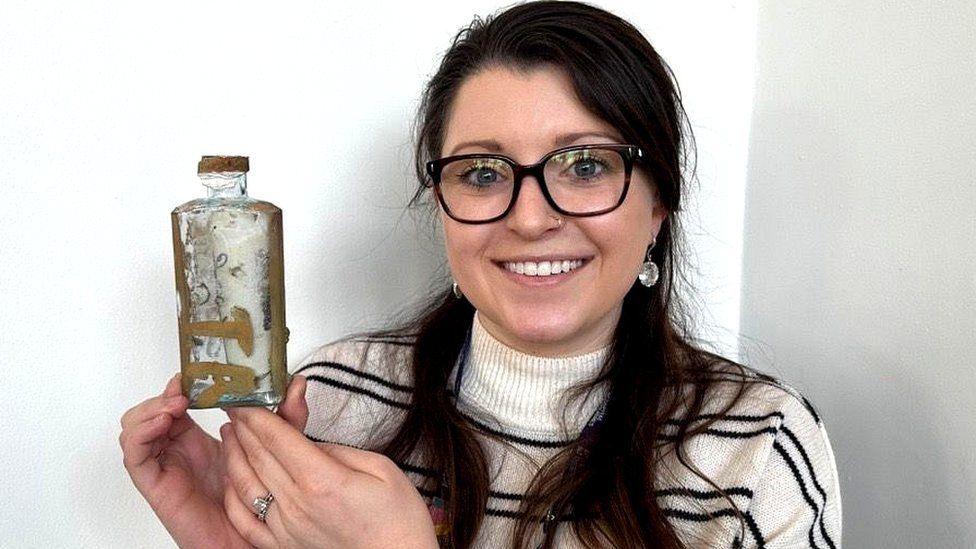
Abby Pendlebury, the theatre's heritage manager, said it was "incredibly thrilling" to find the bottle
- Published
A theatre-lover was "astonished" to find a 119-year-old message in a bottle during a special behind-the-scenes tour of Edinburgh's King's Theatre.
Mike Hume was on scaffolding 40ft (12m) above the stage when he put his hand in a gap behind an ornate crown decoration and found the century-old bottle.
After months of painstaking effort, experts managed to extract the note from inside and found a list of the people who built the theatre in 1906.
Mr Hume, who is one of the theatre's donors, was on the tour of its £40m restoration works when he made the find.
The 48-year-old said it was curiosity that caused him to reach behind the crown.
"It really was like a scene out of Indiana Jones," he said.
"It was a bit damp and there was all this crumbly plaster and stuff in there - then my hand stumbled on this solid object and I pulled out this glass bottle."
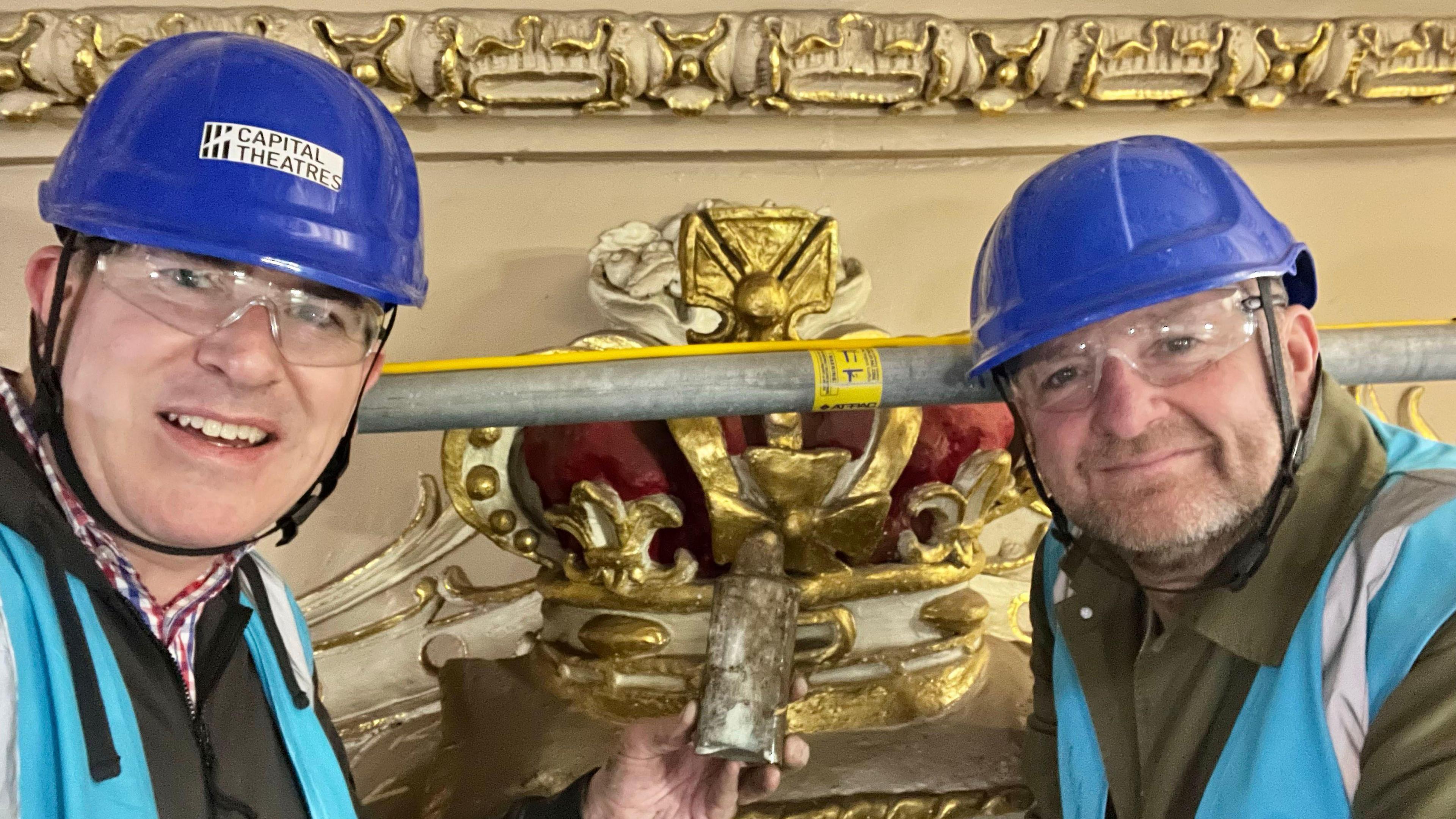
Mike Hume (left) holding the bottle he found behind the crown decoration in the theatre, with John Robb, technical director of Capital Theatres (right)
Although the top of the bottle had been dipped in plaster, to keep it sealed, Mr Hume could see a note inside.
Using his phone to photograph the folded-up note he could just about make out the name in handwritten ink - "W S Cruikshank" - the contractor who built the Edwardian theatre.
Theatre bosses were unable to open the bottle after it was found on 6 December so it was sent to specialists who carefully cut the top off.
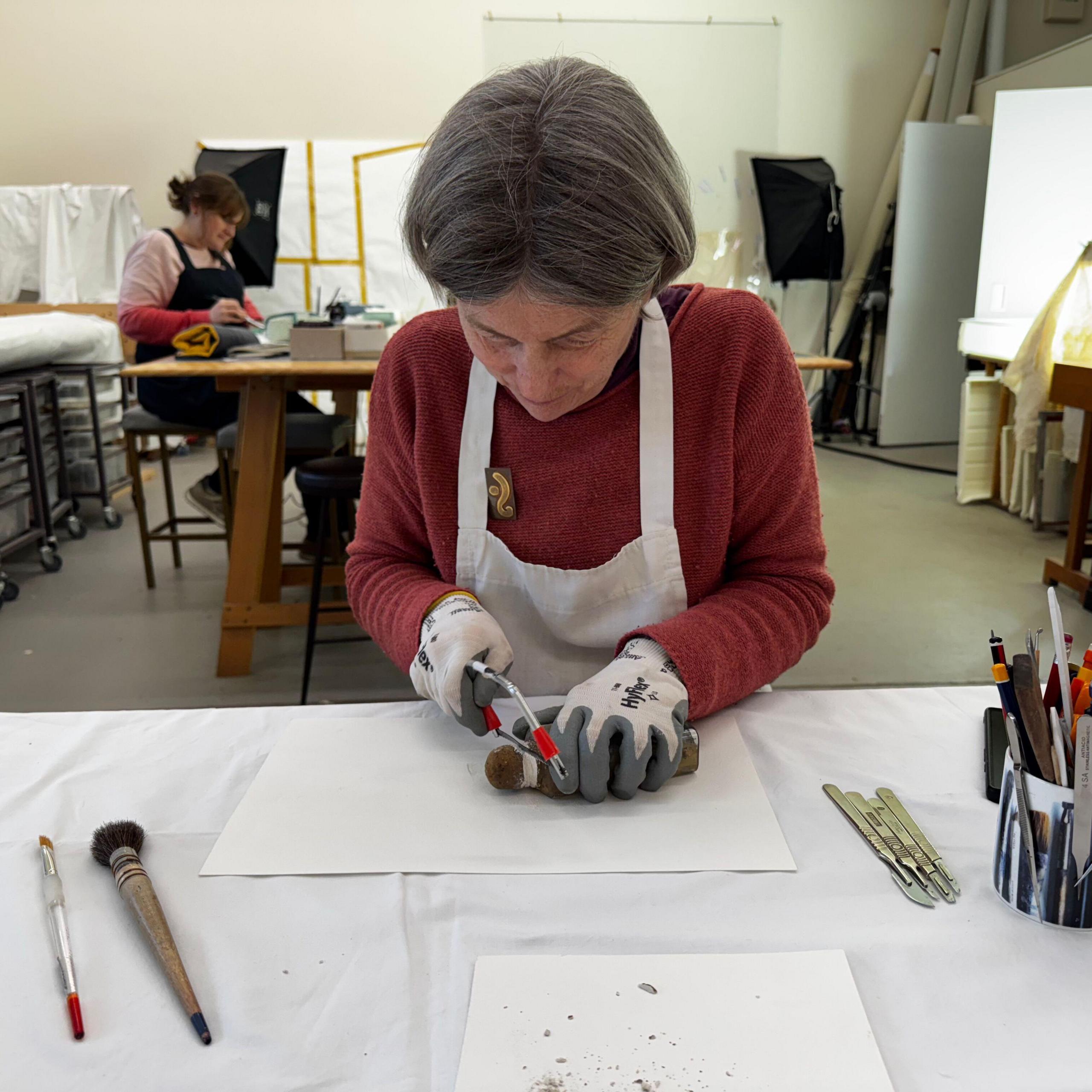
Scottish paper conservator Helen Creasy opening the bottle with a saw
Inside was a note which had become glued together with age, so experts used special techniques and chemicals to prise it apart.
BBC Scotland News asked the genealogy service Findmypast to help uncover the story behind the men who left the note.
The top name on the list was prominent Edinburgh builder William Stewart Cruickshank, who was 50 when he embarked on the King's Theatre project.
He was born in Aberlour in Banffshire and later married Jane Taylor Beck, with whom he had seven children.
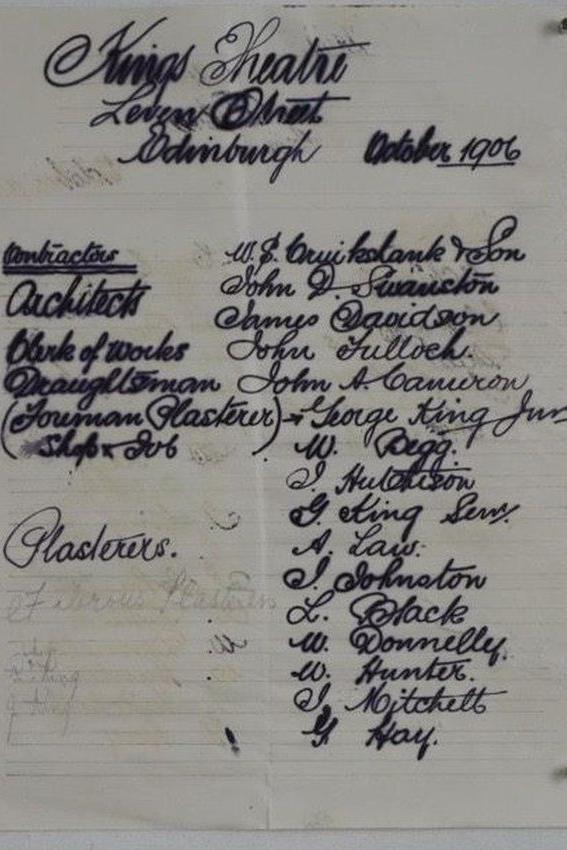
The letter found inside bottle was headlined 'Contractors: W S Cruickshank & Son', and listed the workers involved, continuing: 'Architects: John Daniel Swanston, James Davidson, Clerk of works: John Tulloch, Draftsmen: John Alexander Cameron, Foreman plasterer: George King Jnr, Shop& job: William Begg, John Hutchinson, George Greaves King Snr, Andrew S Law, J Johnston, L Black, W Donnelly, William Hunter, A Mitchell, G Hay'
Next on the list is the theatre's head architect, John Daniel Swanston, who was born in Dundee in 1868 and educated at Dollar Academy.
He opened his own architectural practice in Kirkcaldy in 1895 and specialised in theatre, cinema and public house work.
He died in 1956 in Newton Mearns, in the south of Glasgow, at the home of his daughter Dr Muriel Swanston.
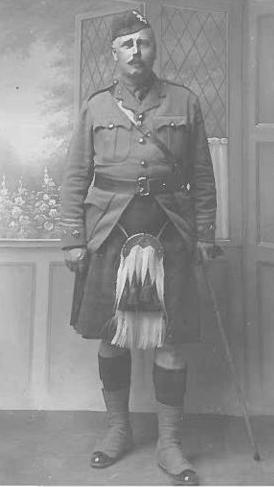
John Daniel Swanston was the lead architect
Another architect named in the letter was James Davidson, who was born in Airdrie in 1848, the son of a weaver.
He was educated at Airdrie Academy and initially trained as a joiner but later became an architect.
The third architect was John Tulloch, who was born in January 1847 in East Lothian.
Draughtsman John Alexander Cameron, foreman plasterer George King and foreman William Begg are also listed in the note as well as plasterers John Hutchinson, Andrew S Law and William Hunter.
Extra details found by Findmypast about the men have been handed over to the theatre.
Curators will use the extensive research to make a display in a new exhibition room in the theatre, along with the bottle and note.
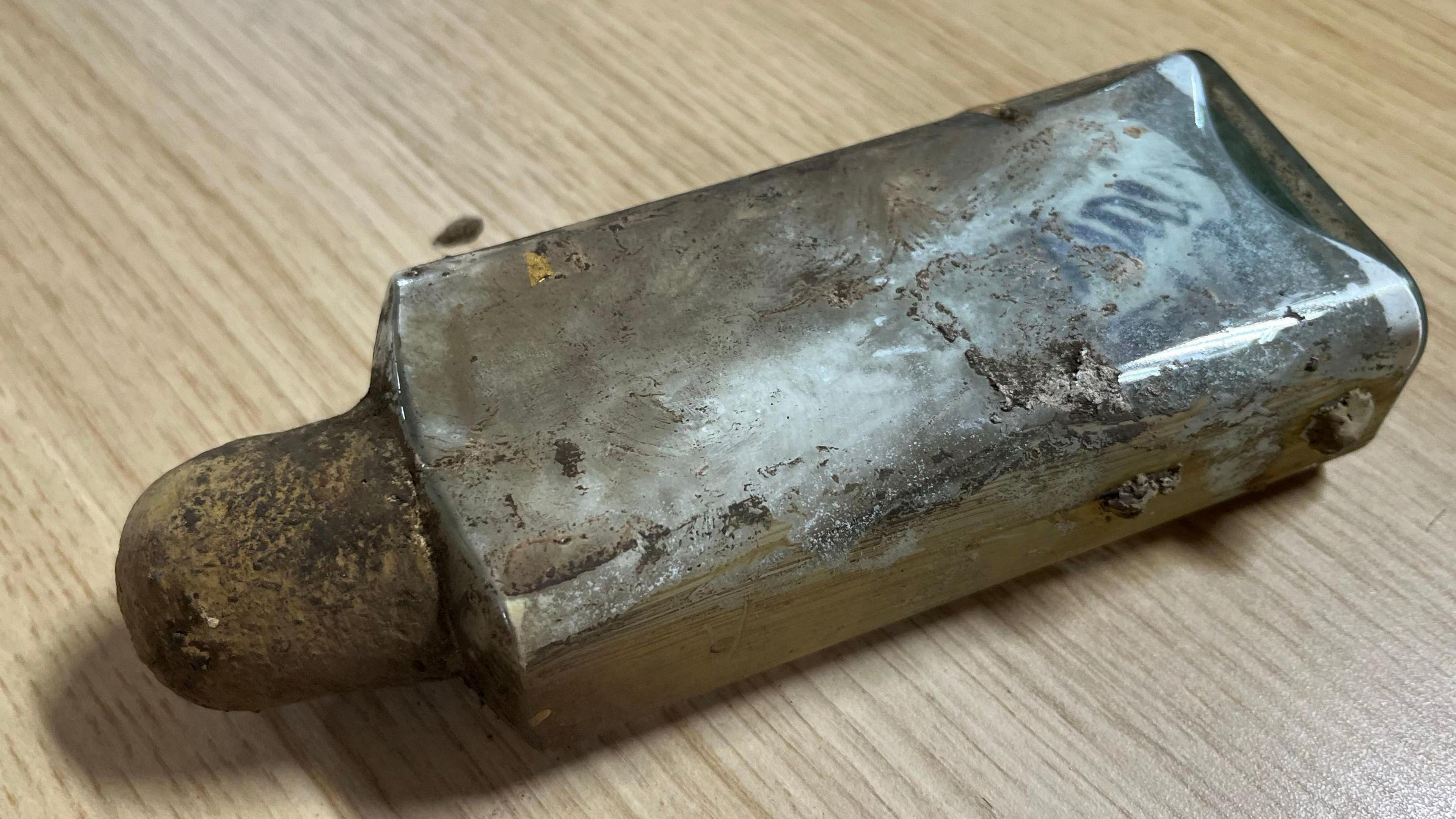
The bottle was sealed with plaster
The King's Theatre cost £50,000 to build in 1905. The current redevelopment,, external which started in 2022, will cost £40.7m.
Two lifts are being fitted and staircases widened at the category A-listed theatre, which is managed by Capital Theatres.
The auditorium is being redeveloped, a wall is being reinstated and a new control room is being added.
An upgraded lighting system is being installed in the gantry, and a new ventilation system will be added too.
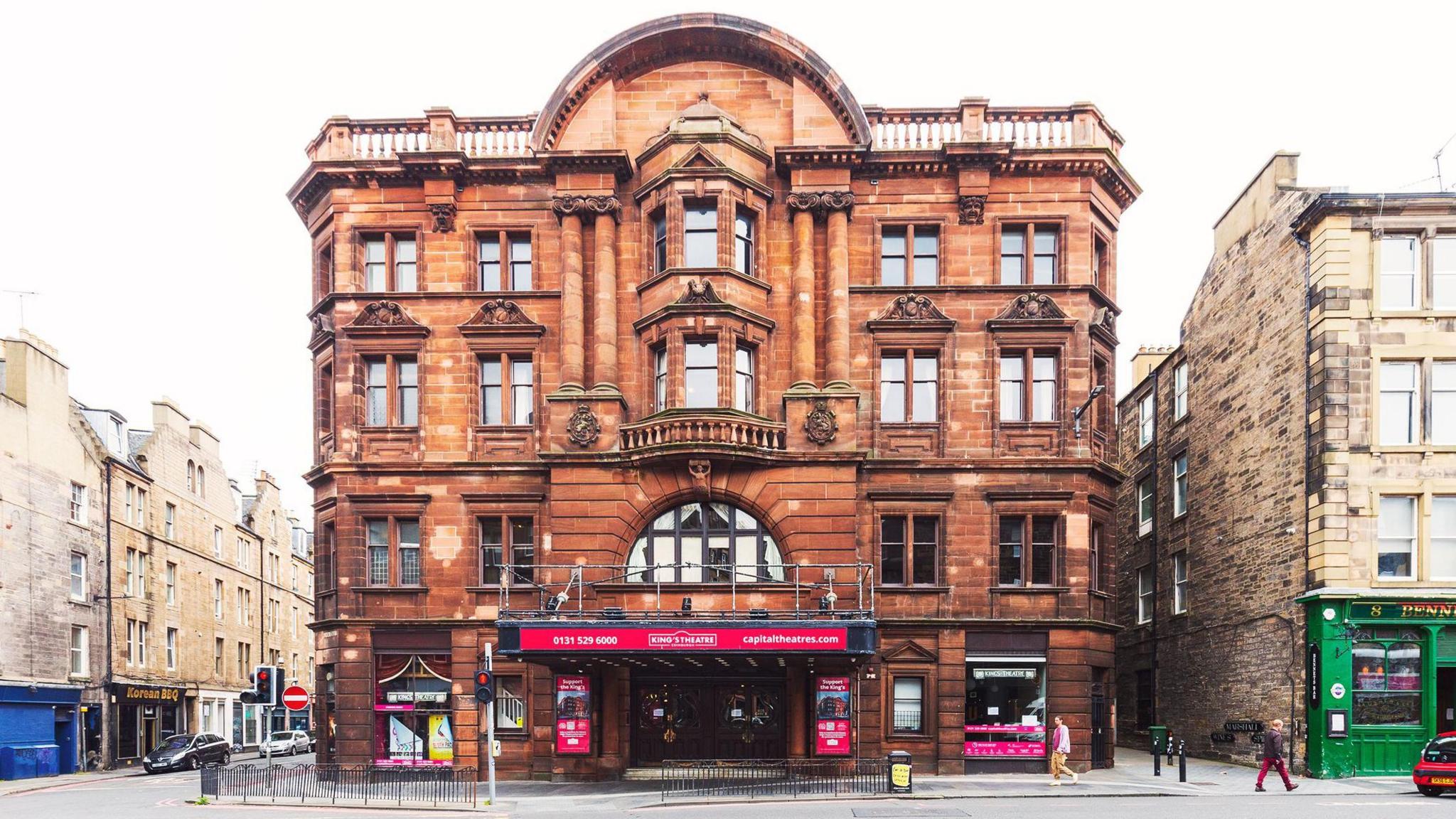
The King's Theatre cost £50,000 to build in 1905
Abby Pendlebury, the theatre's heritage engagement manager, said it was "incredibly thrilling" to find the bottle.
"I think it is fascinating we have a list of plasterers and draftsmen," she said.
"It's showing how personal this was to so many people and how there is a real human connection going back. It's just really beautiful to see."
She said it was "an absolute fluke find" and the way it had been preserved was "incredibly impressive".
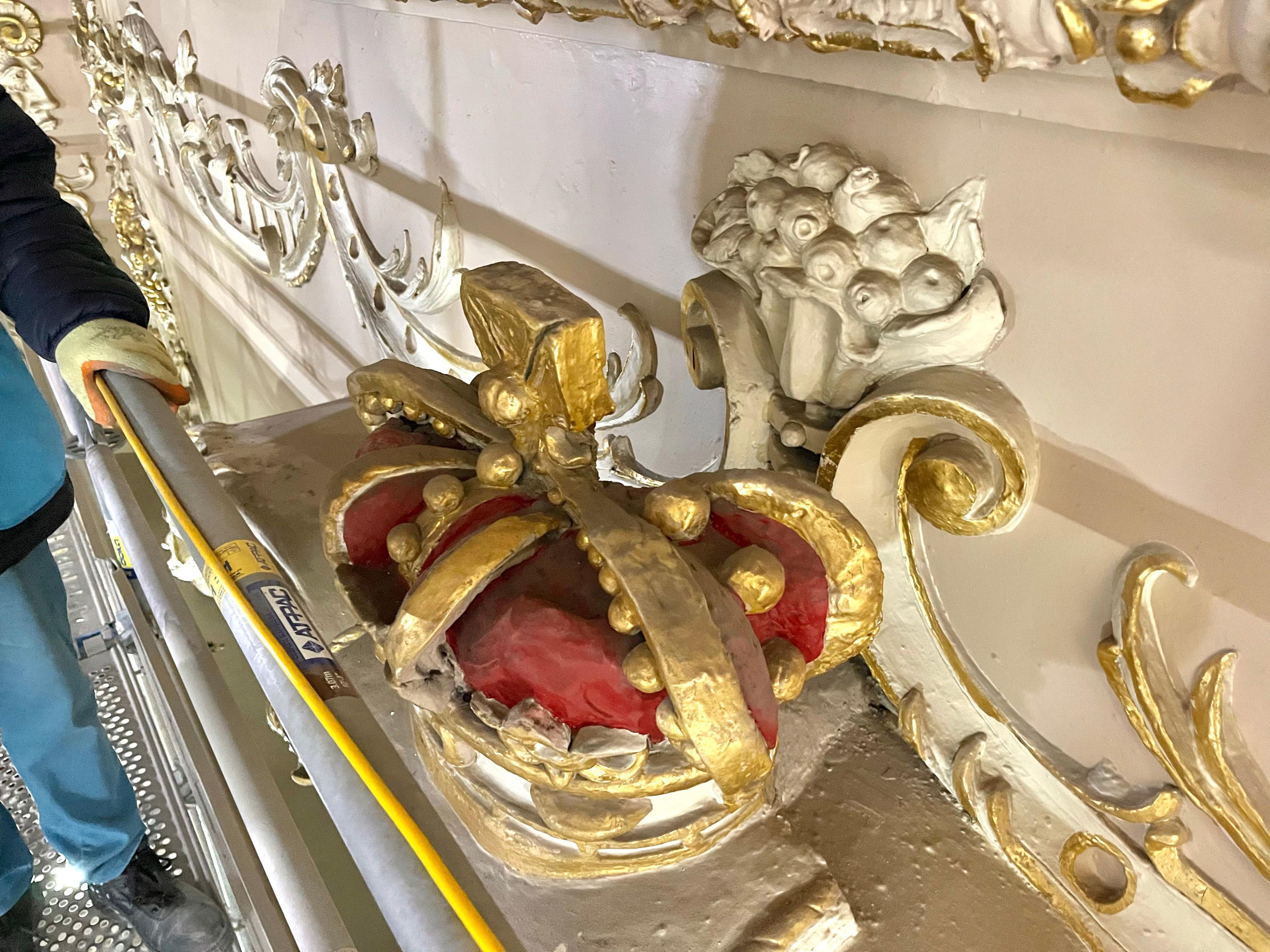
The bottle was through a hole in the wall behind the crown
"The most magical thing to me is everyone who has ever sat in that auditorium and looked at the stage has seen it and so it's just been this gem that's been hiding this whole time," she said.
"I'm amazed we found it and I am amazed at the list of names."
Jen Baldwin, research specialist at Findmypast, said: "Unexpected finds like these can offer a fascinating window into the past.
She said the men who worked on the theatre were highly skilled and from a range of backgrounds, and they "came together to create one of Edinburgh's most well-loved, iconic creative spaces".
The theatre is due to reopen in spring 2026.
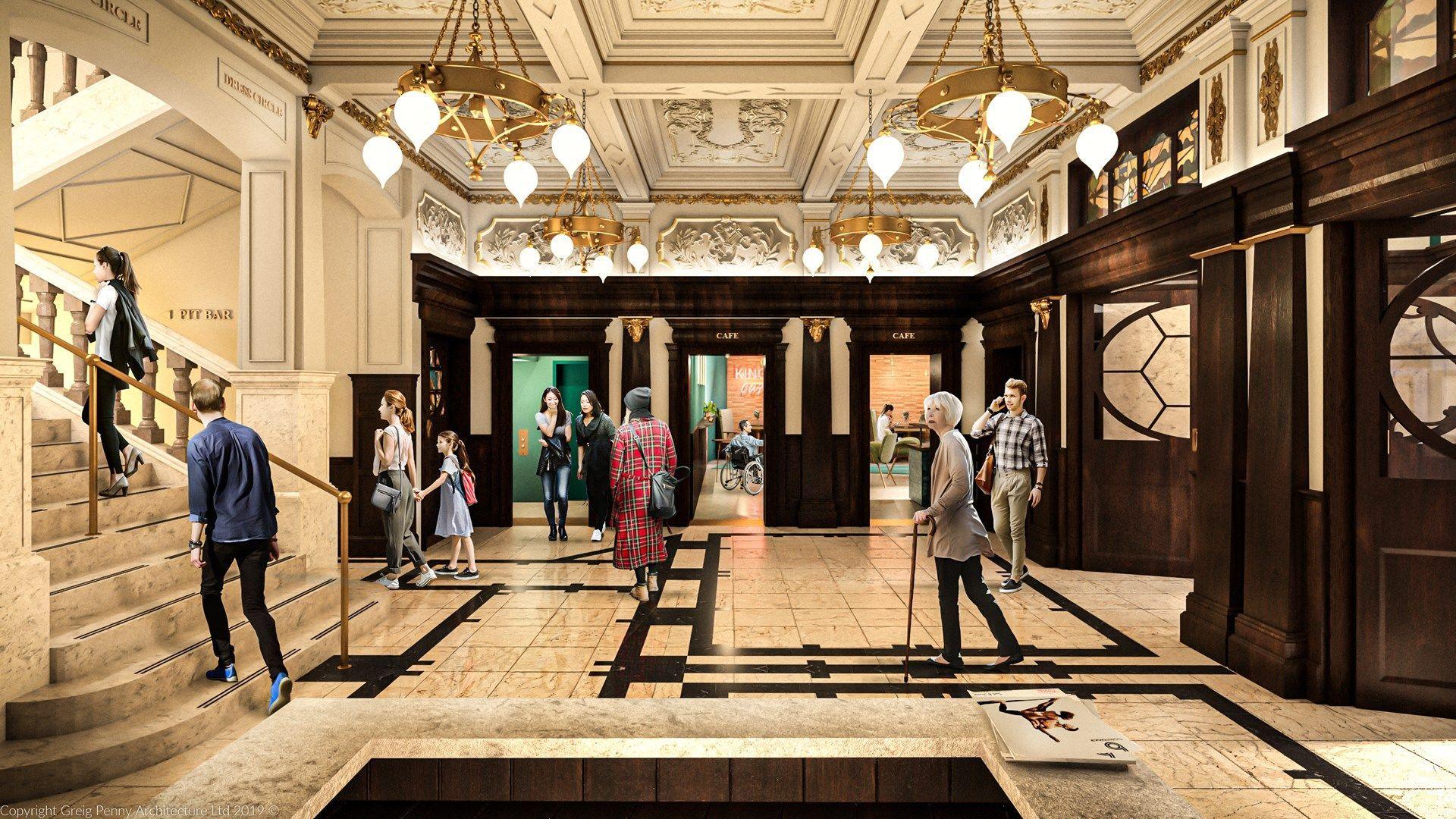
An artist's impression of how the theatre foyer will look once it has been restored.